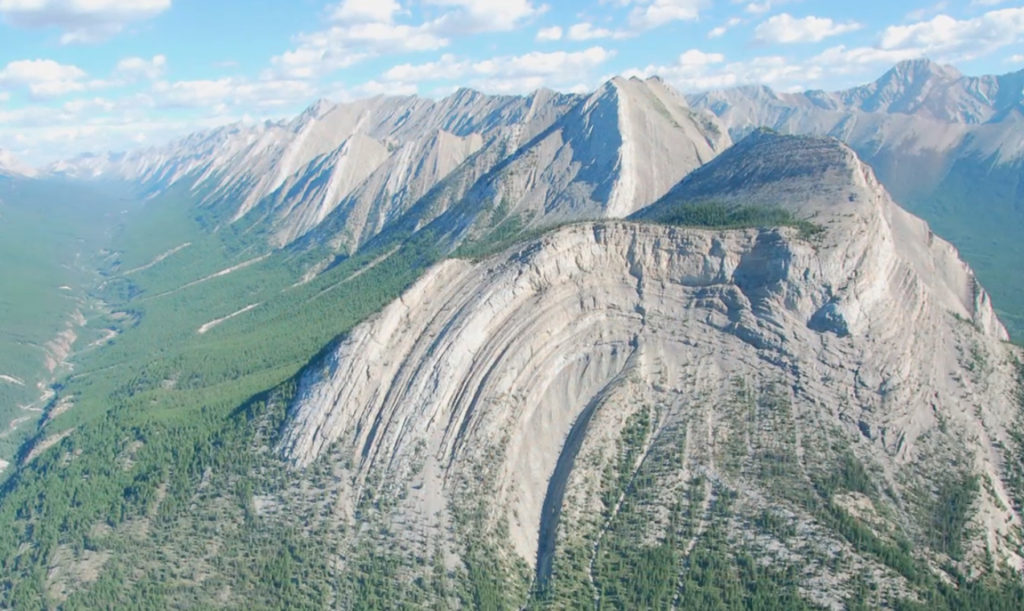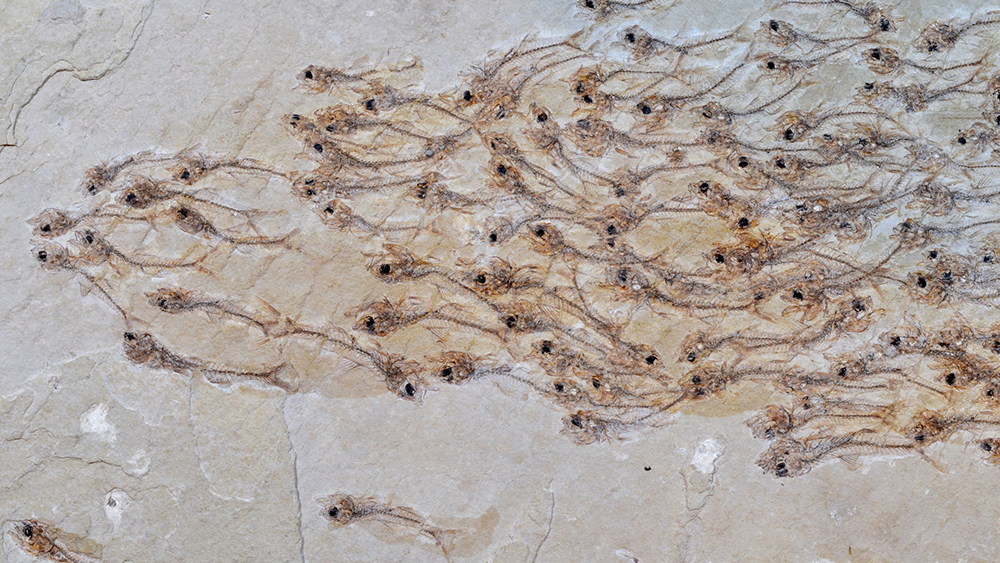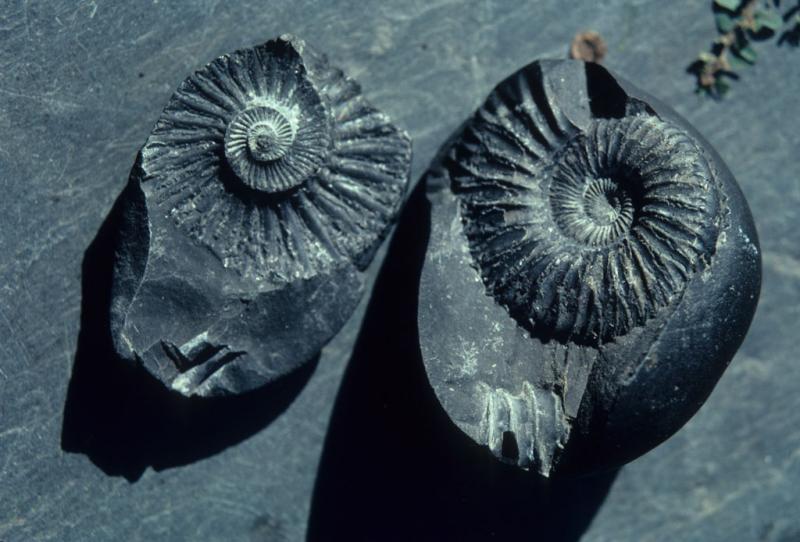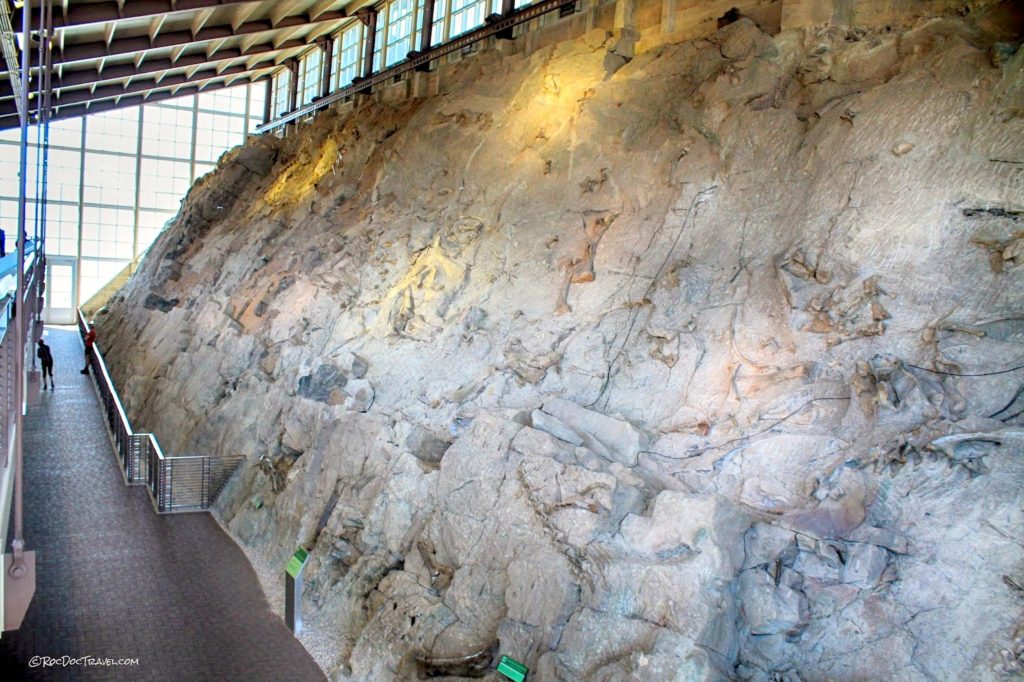What Is Some of the Best Evidence for the Global Flood? Part 1

Introduction
In Genesis chapters 7-8 we’re told that “all the fountains of the great deep” were broken up and water poured upward from inside the earth for 150 days, or 5 months. The floodgates or windows of heaven were opened, and torrential rain fell globally for 40 days and nights.
As a result, the entire earth was covered by a global ocean. All air-breathing life on land was swept away and perished. Second Peter 3:6 confirms, “The world that then existed was deluged with water and perished.”
If this flood as described in Genesis actually happened, what would we expect to find? Well, we would expect to find billions of dead plants and animals buried and fossilized in sand, mud, and lime that were deposited rapidly by water, in rock layers, all over the earth. And that is exactly what we find.
The evidence for Noah’s flood is really all around us, in landscape features all over the world. Many of us don’t recognize it for what it is, because we’ve all been taught that the rock layers are millions of years old. But catastrophe, as opposed to uniformitarianism, is another and perhaps better way to interpret the evidence.
In this post, we’ll look at some excellent evidence for the flood by looking at three important observations.[1] Next week, we’ll continue with four more.
1. Exquisitely Preserved Fossils
A fossil, in itself, is excellent evidence for a rapid burial. Think about that for a minute. When a fish dies, it doesn’t sink to the bottom and get slowly covered up with mud. It floats to the surface and begins to decompose. A land animal, dead on the ground, will not stay preserved as it is slowly covered over with dirt. It will be eaten by scavengers, and like the fish, quickly decompose. So any well preserved fossil is something that was buried very quickly at the time of death.
The rock layers contain many creatures that were buried and fossilized quickly and exquisitely preserved. Many fish were buried alive, with fine details of their fins and eye sockets well preserved. Even the compound lenses in many trilobite eyes are available for detailed study.
Many delicate species have also been preserved. Thousands of jellyfish are impeccably preserved in a limestone bed covering 400 square miles in the Australian outback. This is significant because jellyfish washed up on a beach will quickly melt or be destroyed by crashing waves.
If a fossil is evidence of rapid burial, then it means that the rock layer containing that fossil must have put down quickly. Consider the implications. Most of the rock layers exposed in the Grand Canyon, for example, contain fossils. It means that those layers must have been put down quickly.

2. Marine Fossils High Up in the Mountains
Fossils are one of the best evidences of a global flood, especially where many fossils are found. For example, we don’t find marine creatures, such as fish, clams, and corals, buried and fossilized on the sea floor where they once lived. Instead, we find most of them buried in sedimentary rock on the continents and even high up in the mountains.
We find ammonite fossils (squids with coiled shells) in limestone layers high up in the Himalayas in Nepal, near the top of Mount Everest. Of course, Mount Everest wasn’t there at the time of the flood. The sedimentary layers now making up the Himalayas were first deposited on the continent during the flood. The layers buckled and uplifted at the end of the flood to form the towering Himalayan mountains that we see today.
Many of the fossils contained in rock layers at the Grand Canyon, as mentioned earlier, are marine fossils. The Redwall Limestone, at over 2,900 feet in elevation, is one of the best examples. This layer contains fossils of brachiopods (clam-like organisms), corals, bryozoans (lace corals), crinoids (sea lilies), bivalves (clams), gastropods (marine snails), trilobites (horseshoe crab-like animals), cephalopods (squid-like creatures), and even fish teeth.
Uniformitarian geology tells us that rock layers containing marine fossils were once under ancient seas in the distant past. But this is a problem. We know that the continents are made up of rocks that are less dense and lighter than the ocean floor rocks and the mantle rocks beneath the continents. The continents, in fact, have an automatic tendency to rise and “float” on the mantle rocks beneath.[2] So the continents could never have sunk below today’s sea level. Instead, the ocean waters had to rise and flood up over the continents. And that is exactly what the Bible describes during the global flood.

3. Massive Fossil Graveyards Around the World
Countless billions of plant and animal fossils are found buried in extensive graveyards around the world. The Redwall limestone of the Grand Canyon, once again, is an example. This layer is seven feet thick and contains billions of straight-shelled, chambered nautiloids of all different sizes, along with all of its other marine creatures. This fossil graveyard stretches for 180 miles across northern Arizona and into southern Nevada, covering an area of at least 10,500 square miles.
To form such a huge fossil graveyard required 24 cubic miles of lime, sand, and silt, flowing in a thick slurry at more than 16 feet per second, or 11 mph. It had to catastrophically overwhelm and bury this huge, living population of nautiloids to result in what we see today.
In many areas, both marine and land dwelling creatures are found buried together. In a fossil graveyard in Montceau-les-Mines, in central France, hundreds of thousands of marine creatures are found buried with amphibians, spiders, scorpions, millipedes, insects, and reptiles. This can only happen if the ocean waters rose and rapidly swept over the continents, during the global flood.

Conclusion
If a fossil is evidence of rapid burial, and we find fossils in the rock layers all over the world, then the implications are clear. Any rock layers that contain fossils must have been put down quickly.
Next time we’ll look at four more powerful evidences for Noah’s flood, in part two of this post.
[1] This post is adapted from Dr. Andrew Snelling, “Global Evidences of the Genesis Flood” Answers Magazine, July-September 2021, Vol. 16 No. 3; also from the on-line article “What Are Some of the Best Flood Evidences,” available at https://answersingenesis.org/the-flood/what-are-some-of-the-best-flood-evidences/, along with all of its technical references, accessed 10/5/21.
[2] J.P. Davidson, W.E. Reed, and P.M. Davis, “Isostasy,” in Exploring Earth: An Introduction to Physical Geology (Upper Saddle River, NJ: Prentice Hall, 1997), p. 124–129; cited in “What Are Some of the Best Flood Evidences,” available at https://answersingenesis.org/the-flood/what-are-some-of-the-best-flood-evidences/, accessed 10/5/21.
This post is Facinating!!!